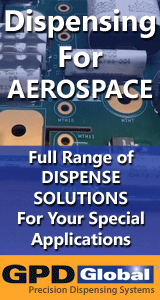| | | | Which among the two profiling method is more reliable/accurate in getting the oven thermal profile? | | | | | | | | a) using a HIGH-TEMP solder wire then soldering the thermocouples onto the profile points of the board (e.g. component lead etc.) | | | | | | | | b) not soldering the thermocouples on the profile points but by just applying silicone heat transfer paste on the thermocouples.
While high-temp solder is clearly the most reliable method, we have found that aluminum tape works almost as well and is much easier. There is a paper posted on our website which discusses this in http://www.kicthermal.com/library/nw99-ts19.htmldepth: | | | | | | | | suggestions are welcome ! | | | | | | | For accurate temperature I prefere using a HIGH-TEMP solder wire then soldering the thermocouples onto the profile points of the board. However this is a destructive methode. | | | For this reason we created on PCB with severall SMD package and footprints. This pcb will be used every time when we measure to check SPC (Static Process Controll) | | | | | | The problem I had using Tape and silicone heat transfer paste, was that the temp. reading was much higher as the actual temp. especially in case of concection. | | | | | | Measuring points we use: Lead(s), Top and Bottom PWB, Inside PWB (Using via or other small hole) and temp. between comp and PCB (PLCC or SO) | | | Good luck Armin Tan | | | | | Unless you can convince management to buy the Saunders spring loaded probes, the hi-temp solder is the way to go. As Armin says, unless you have an intimate physical connection you are probably measuring the higher air temperature. | | If you are soldering the thermocouple to a completed assembly, be sure to wick off all the existing solder. The hi-temp won't do any good if it's attached to lo-temp solder. Keep the size of the solder attachment similar to the acutual finished joint. | | John Thorup | | | High temp solder is about the best way to go. It does require a bit more work to desolder, but if used correctly, it should give you about the most reliable reading thermodynamically. Epoxies and the such are OK, but tend to be messy and are usually impossible to remove from the PCB. | | Be careful about buying/using the �spring loaded� TCs. They have a tendency to push parts around if not connected properly. They connect to the front or back edge of your PCB (if running an edge belt oven) and space may be limited. The profile you see will be �shaky� because there is movement between the part and TC when thermal expansion occurs. | | |
reply »
![]()
![]() Which among the two profiling method is more reliable/accu...
- Jul 21, 1999
by
Dreamsniper
Which among the two profiling method is more reliable/accu...
- Jul 21, 1999
by
Dreamsniper
![]()
![]()
![]() | Which among the two profiling method is more reliable/ac...
- Jul 22, 1999
by
George Verboven
| Which among the two profiling method is more reliable/ac...
- Jul 22, 1999
by
George Verboven
![]()
![]()
![]() | | Which among the two profiling method is more reliable/...
- Jul 22, 1999
by
| | Which among the two profiling method is more reliable/...
- Jul 22, 1999
by
![]()
![]() | | | Which among the two profiling method is more reliabl...
- Jul 26, 1999
by
| | | Which among the two profiling method is more reliabl...
- Jul 26, 1999
by
![]()
![]() | | | | Which among the two profiling method is more relia...
- Jul 29, 1999
by
| | | | Which among the two profiling method is more relia...
- Jul 29, 1999
by







